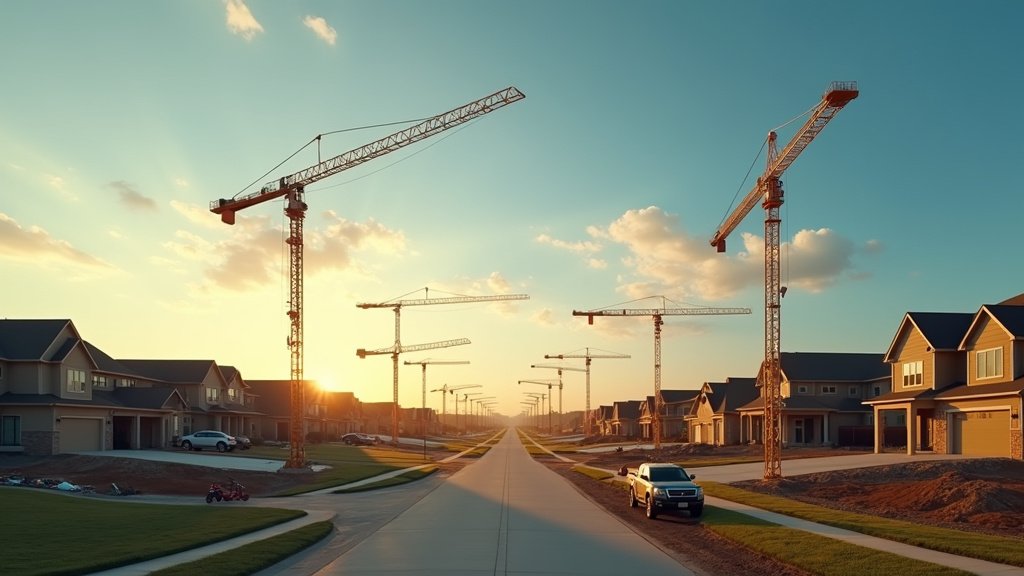Texas continues its reign as the nation’s epicenter for urban population growth, with numerous cities, particularly in the Dallas-Fort Worth and Houston metropolitan areas, dominating the latest rankings of the fastest-growing municipalities in the United States. New data from the U.S. Census Bureau highlights a significant demographic shift, with several Texas communities experiencing population booms that far outpace the national average.
Texas Communities See Unprecedented Population Surges
The Lone Star State has firmly established itself as a magnet for new residents, a trend underscored by recent Census Bureau estimates. Princeton, a suburb of Dallas, has been recognized as the fastest-growing city in the nation for 2024, showcasing a remarkable 30.6% population increase between July 2023 and July 2024. This explosive growth has more than doubled its population since 2020, transforming it from a smaller town into a rapidly expanding hub.
Following closely is Fulshear, located west of Houston, which secured the second spot nationally with a 26% growth rate over the same period. Other Texas cities that have featured prominently on these growth lists include Celina, Anna, and Forney, all near Dallas, and various communities within the broader Houston metropolitan area. For instance, Forney has seen its population grow by 64.2% between April 2020 and July 2024, underscoring a sustained trend of expansion in these areas.
The Texas Magnet: Economic Strength and Lifestyle Appeal
Several key factors contribute to Texas’s enduring appeal and rapid population growth. A robust economy, characterized by a diverse job market and significant corporate relocations, is a primary driver. Major industries, including technology and energy, are creating substantial employment opportunities, attracting skilled workers and their families.
Texas’s business-friendly climate, notably its absence of a state income tax, further enhances its attractiveness compared to other states. This fiscal advantage, combined with a generally lower cost of living and greater housing affordability relative to coastal regions, fuels a continuous inflow of domestic migrants. While housing prices have seen significant increases due to demand, new construction has also kept pace in many areas, attempting to balance supply and demand.
In addition to domestic migration, international migration has also become a significant contributor to Texas’s population gains in recent years. This multifaceted influx of residents is reshaping the state’s demographic landscape.
Suburban Boom Drives Metropolitan Growth
The population surge is not confined to a few isolated towns; it is a widespread phenomenon concentrated in the state’s major metropolitan areas. Cities like Houston and Dallas-Fort Worth are consistently ranked among the nation’s fastest-growing metros. However, this growth is predominantly occurring in their outlying suburban counties, while some urban cores have experienced population stagnation or even decline.
For example, while Dallas County has seen population losses, its surrounding counties, especially in the northern suburbs like Collin and Denton, are experiencing exponential growth. Similarly, the Houston metro area’s growth is largely concentrated in counties like Harris, Fort Bend, and Montgomery. This suburban expansion has led to the development of new residential and commercial centers, creating dynamic communities on the fringes of established cities.
Navigating Growth: Infrastructure and Housing Challenges
This rapid urbanization and suburbanization present significant challenges for public officials and communities. The strain on existing infrastructure is immense, requiring substantial investments in transportation networks, utilities, water supply systems, and public safety services. Cities like Georgetown and Taylor exemplify the critical need for expanded resources to support burgeoning populations.
The booming housing market, driven by relentless demand, has led to increased property values and concerns about affordability, particularly in high-demand areas like Austin and Dallas. While new construction has been robust, the pace of development can take years, meaning supply often lags behind immediate demand, contributing to rising home prices and competition.
A Trending Growth Trajectory
As Texas continues to attract new residents and businesses, its cities are poised for further expansion. The state’s strategic economic policies, coupled with its lifestyle appeal, ensure its position as a leading destination for population growth. While challenges related to infrastructure and housing persist, the ongoing development and adaptation of its communities underscore a dynamic and resilient growth trajectory. This trending news highlights Texas’s continued dominance in shaping the nation’s urban landscape.






